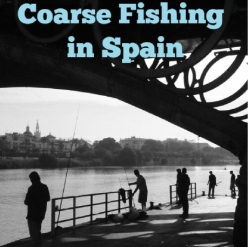This is an account of a trip made by UK angler Geoff Langman and his friend to Asturias, for ten days at the beginning of June in 2012.
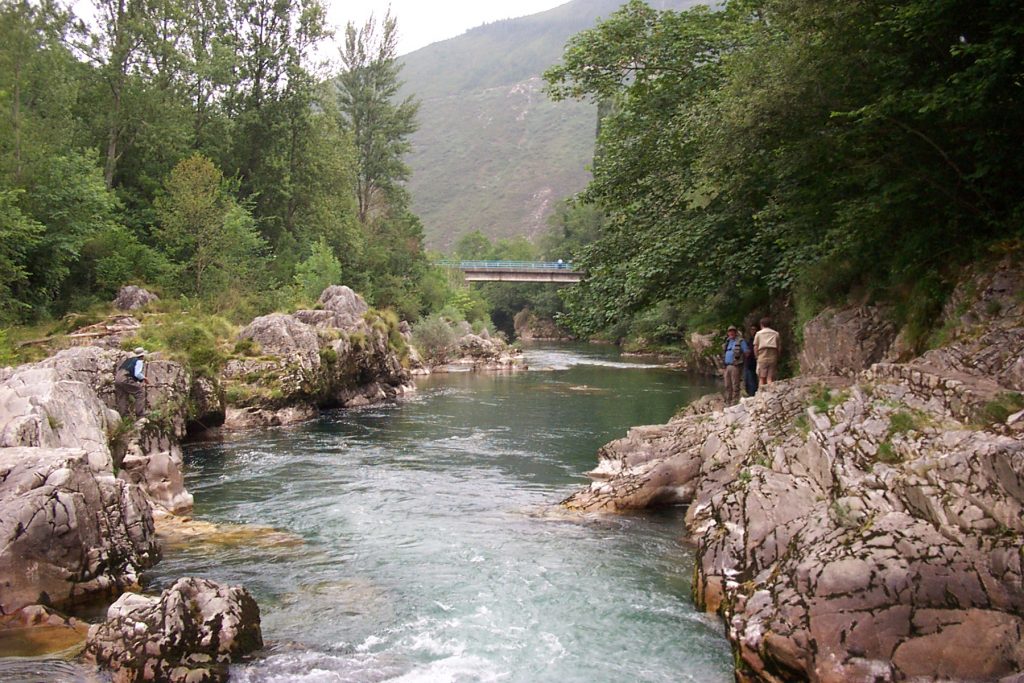
The owner (Jamie) of our first hotel, located near Cano, kindly sorted out our licences on our arrival. As we did not have access to the day ticket, cotos (fishing reserves ) we fished the free fishing areas. Caught small (six inches long) trout to spinner. We were amazed at how the cotos were hammered with large number of anglers on small stretches from dawn to dusk. I queried whether the large numbers would all have had permits but was assured that this is the case – are permit numbers for cotos given out irrespective of the size of coto ?
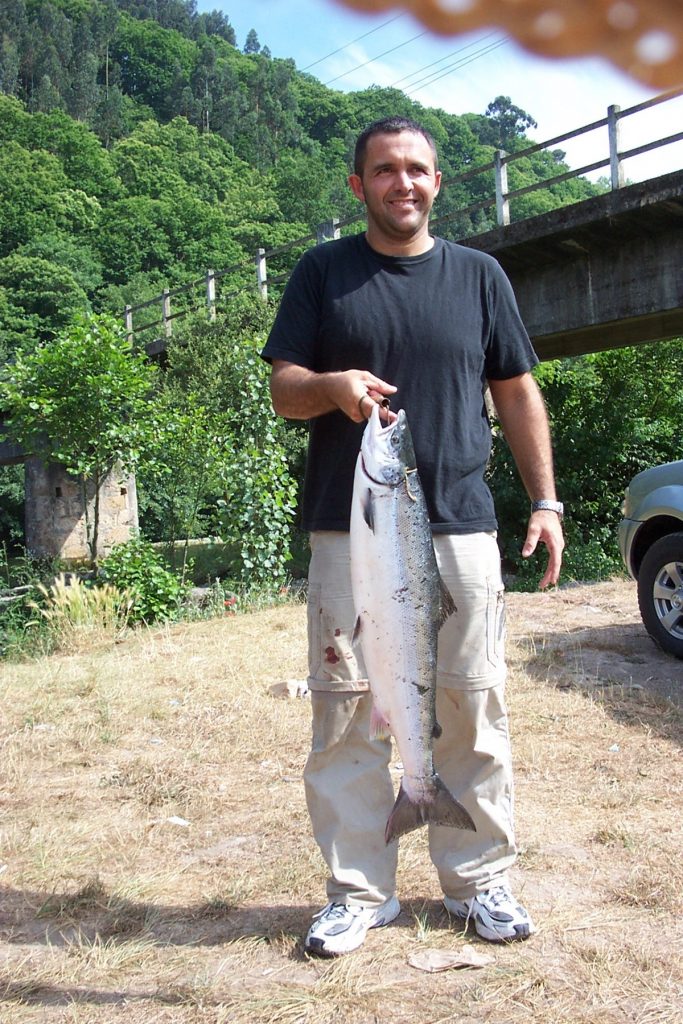
The water was low and it seemed from conversation that unless you had access to a coto you chances of catching a salmon were low. Also the steep gradient of the river in a relatively short number distance means that the salmon move from coto to coto; and the steep, tree covered banks restrict space to cast a fly lure from the banks of the river Sella.
We found our next hotel to be a more comfortable hotel than the previous and once again the owners were very helpful.
By now are expectation had reduced. We walked about six kilometres of the river Cares on the first evening and did not see a rise! On the second day we came across a friend of the hotel owner who has fished the river for thirty years and I explained our experience on the rver Sella and remarked about the lack of life in the river Cares. In essence he said that cormorents had moved on to the river about 3-4 years ago and had wiped out the trout, before themselves moving on. The lack of insect life in the river was as a result of a large flood the previous winter. Fish are being caught but mainly in the cotos – a friend of his had caught a dozen sea trout over 2 kilograms form a coto the previous week. The lack of bird life along the river was also noticeable. Other than migratory fish it appeared to be a dead river.
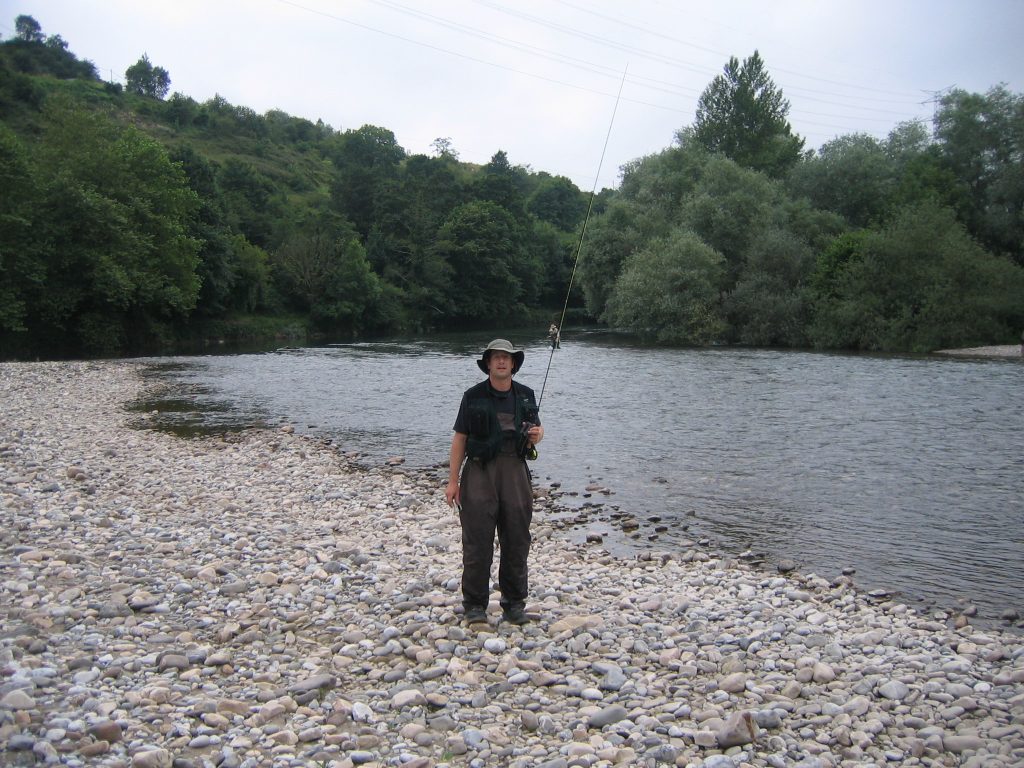
By looking at the previous years salmon returns for the river it seemed that 60% of the fish were caught in four cotos. We decided to them concentrate on trout only waters and fished a small river nearby and caught small trout on fly lures from stretches which were difficult to reach.
Jose Concha, our host at our next hotel close to Llanes, was most welcoming and showed us his small trout river – the river Bedon, and we fished in low water the stretch were you have taken his photo which is in your book (The Smooth Guide to Fishing in Asturias) – he was happy to see the photo. It was very difficult (one small trout) fishing but enjoyable. There was a large number of mullet in the river, but as usual they ignored our offerings.
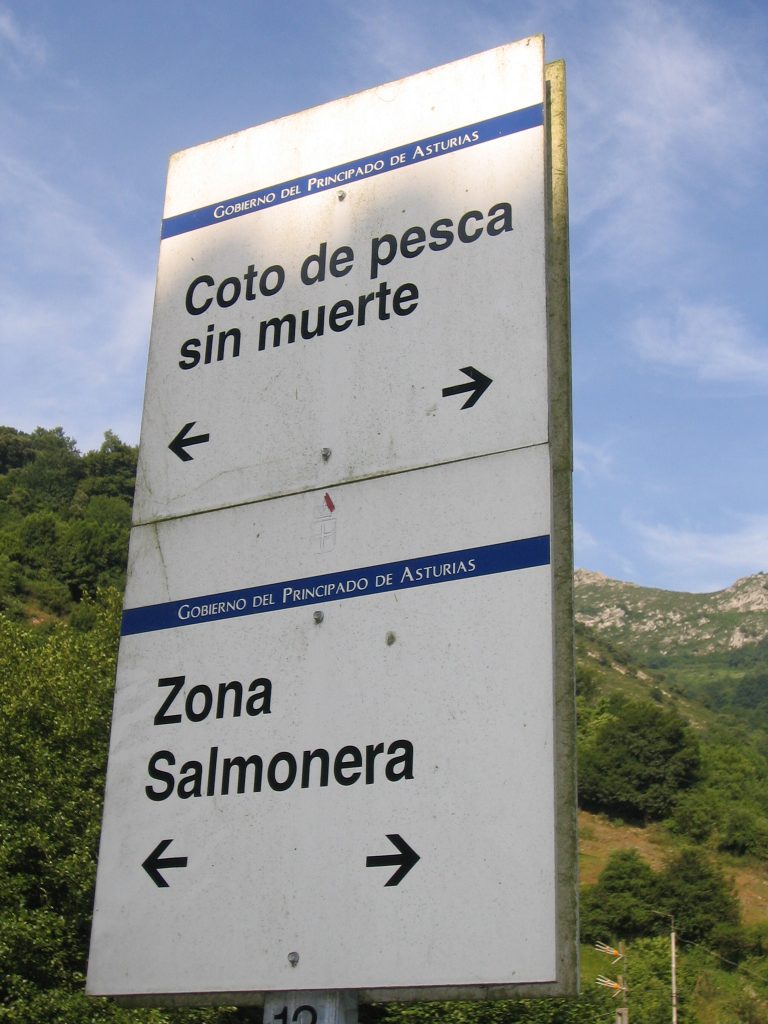
Overall we very much enjoyed our break as we like the northern Spanish region of Asturias. As regards the fishing we would go again but only for trout. Clearly salmon are to be had in the cotos but they seemed to be too many permits issued to make fishing enjoyable and the lack of life in the main rivers must be a ongoing concern. A special mention goes to Phil’s fishing guide book for Asturias, which provided us with a wealth of valuable information for north Spain’.
Get in touch for information about accommodation and fishing guides for Spain. Email: philippembroke007@hotmail.com
For information about fishing guide books, covering Spain, Portugal and France click here: www.spainfishing.com
